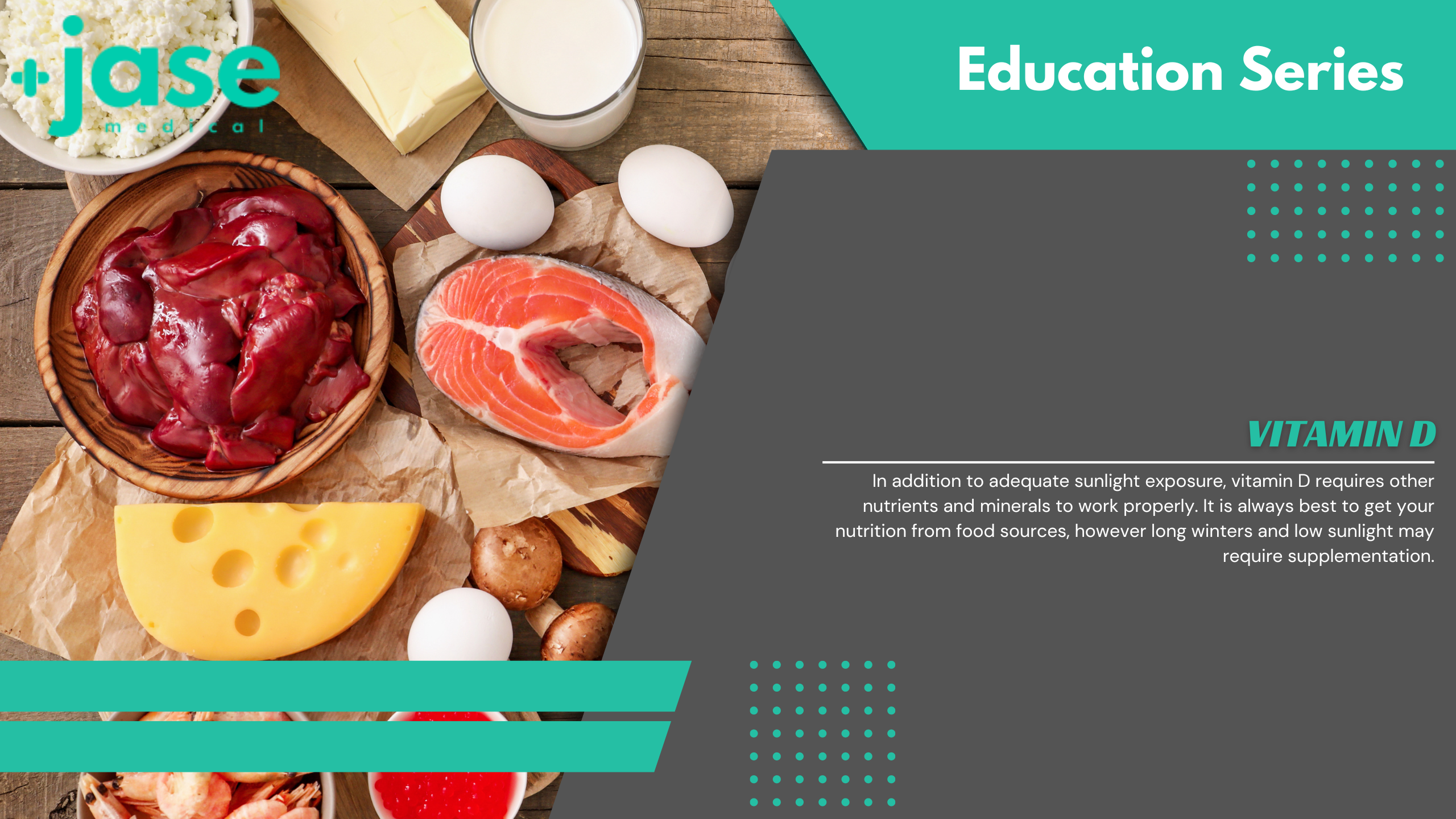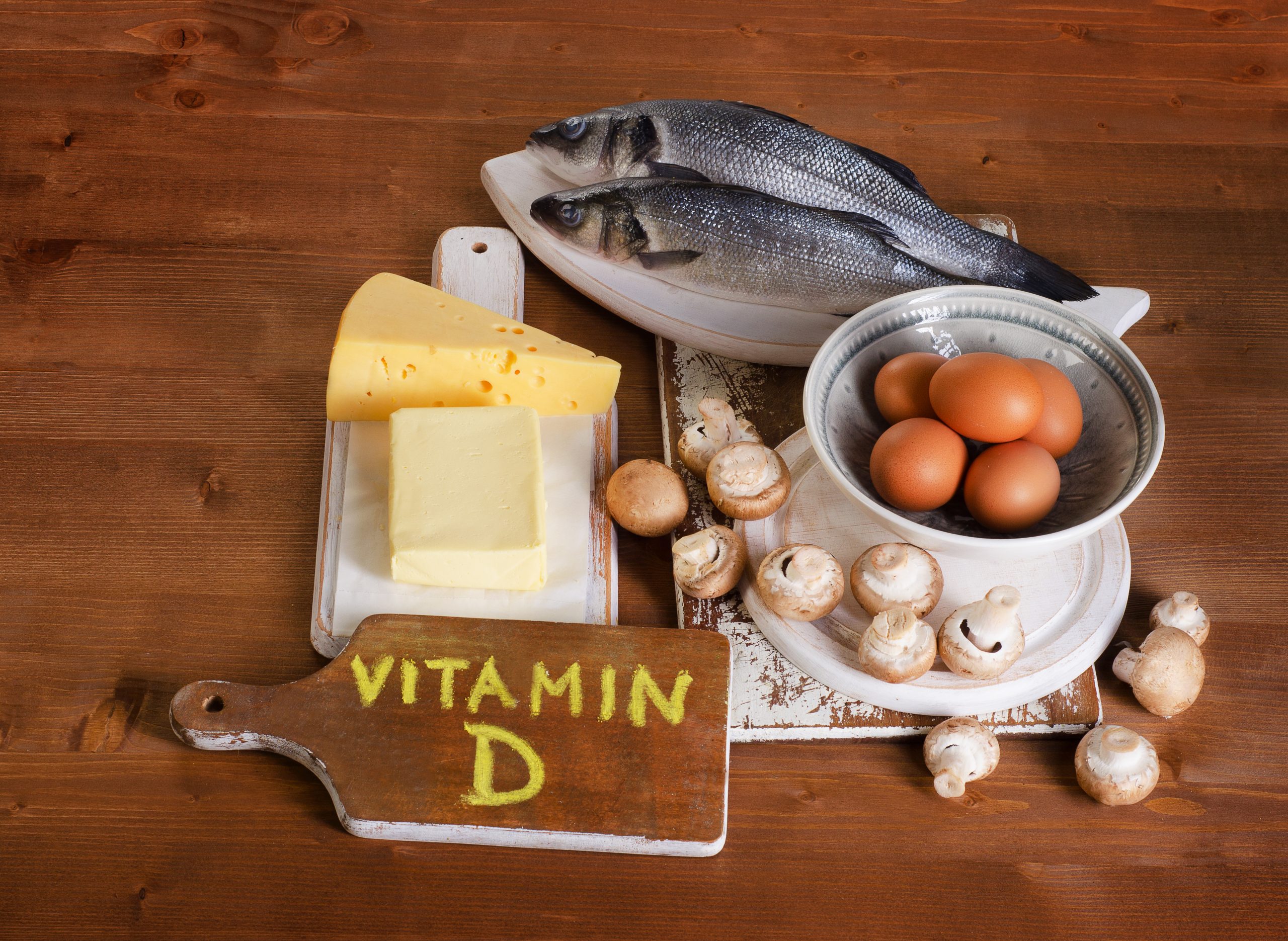

Vitamin D is found in two main forms:
Vitamin D2 (ergocalciferol) – The main source is from plants. Mushrooms, when exposed to UV light produce D2. Fortified cereals are usually fortified with vitamin D2
Vitamin D3 (cholecalciferol) – The main source is from animals- Sources of D3 are egg yolks, cod liver oil, fatty fish-salmon, sardines, herring, tuna, beef liver. In addition, when skin is exposed to sunlight vitamin D3 is produced. The body only produces enough vitamin D3 from sunlight as it needs then stops producing it.
The liver metabolizes vitamin D2 and vitamin D3 and form the active compound known as calcifediol. A study done by the National Institute of Health on post-menopausal vitamin D deficient women showed that vitamin D3 yielded twice more calcifediol than an equal amount of vitamin D2.
Excess Vitamin D3 is stored in the bodies adipose tissue and liver and is converted by the kidneys to the active form of vitamin. Excess vitamin D is almost exclusively from supplement sources.
The amount of vitamin D you need each day depends on your age. Average daily recommended amounts are listed below in micrograms (mcg) and International Units (IU):
| Life Stage | Recommended Amount |
| Birth to 12 months | 10 mcg (400 IU) |
| Children 1–13 years | 15 mcg (600 IU) |
| Teens 14–18 years | 15 mcg (600 IU) |
| Adults 19–70 years | 15 mcg (600 IU) |
| Adults 71 years and older | 20 mcg (800 IU) |
| Pregnant and breastfeeding teens and women |
15 mcg (600 IU)
|
The 25-hydroxy vitamin D test (a blood test) is the most accurate way to measure how much vitamin D is in your body.
Factors affecting vitamin D deficiency
- Older adults skin doesn’t absorb vitamin D as well as younger population. Dark skin also doesn’t absorb vitamin D very well either
- Some diseases- celiac, Crohn’s disease, ulcerative colitits, limit absorption of fats and vitamin D
- Obesity and gastric bypass may need more vitamin D
Signs of vitamin D deficiency- up to 42 percent of the US population is deficient
- Rickets in children
- Osteomalacia in adults
- Not sleeping well.
- Bone pain or achiness.
- Depression or feelings of sadness.
- Hair loss.
- Muscle weakness.
- Lowered immunity to infections-viral and bacterial
Signs of vitamin D toxicity
Vitamin D toxicity is not common, except when extremely high doses of vitamin D is taken in supplement form for a long time (months).
- Hypercalcemia
- Nausea, vomiting
- Can progress to bone pain and kidney stones
How to Improve Your Vitamin D Status
In addition to adequate sunlight exposure, vitamin D requires other nutrients and minerals to work properly. It is always best to get your nutrition from food sources, however long winters and low sunlight may require supplementation. If supplementing with vitamin D, it is best to take with fat since it is a fat-soluble vitamin.
Vitamin K2(MK-7)- activates osteocalcin, which integrates calcium into the bone. Activates matrix GLA protein (MGP) to bind excess calcium and promote arterial flow and flexibility. Food sources include fermented foods, natto
Magnesium- helps convert vitamin D to active form. Food sources include leafy greens, beans, legumes, almonds, cashews
Zinc– synergistic effect- vitamin D enhances zinc action and homeostasis and zinc enhances vitamin D absorption. Food sources include oysers, red meat, poultry
Boron– increases vitamin D in the blood. Food sources include coffee, milk, apples, dried and cooked beans, and potatoes
Cold water fish– salmon, herring, sardines, tuna
- Brooke Lounsbury, RN
Medical Content Writer
Lifesaving Medications
Recent Posts
Keeping you informed and safe.
Avian Influenza (Bird Flu): It’s Resurgence, Risks, and Treatment
They call it the bird flu, but it also affects other animals, and people. .Making an Unwelcome Comeback Back in the mid to late 2000’s the bird flu was on a devastating path around the world - killing 53% of humans who contracted it. States of emergency were declared,...
Two Simple Ways to Enhance Your Well-being Alongside Medication
“Never go to a doctor whose office plants have died.”~ Erma Bombeck, humorist and author.Laughter is said to be the best 'chronic prescription' that our Jase Daily service aims to provide. If only. But combining laughter, positive thoughts, and having a purpose in...
Why Do People Want a 12-Month Supply of Their Prescription Medications?
There are a lot of things we like to stock up on: pressure-canned fruits and vegetables, canned goods at the grocery store. (“Two for a dollar?! I need another cart!”), soaps and cleaners . . .And toilet paper! Oh yes! But stock up on prescription medicines for months...


